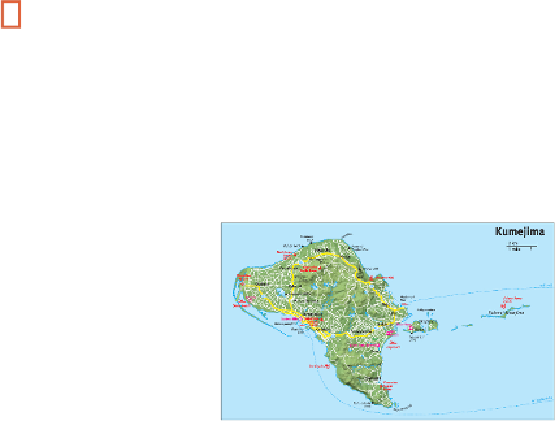Travel Reference
In-Depth Information
“Sand Island,” a pockmarked bomb site.
The latter two Kanji characters of its name mean “Sand Island.” The first character—and
this is cute—one means “Get in,” the other “Get out.” So, it's either “Get on Sand Island” or
“Get of Sand Island.” Both names are correct. Someone must have a sense of humor. Natur-
ally, it is uninhabited and uninhabitable.
5
KUMEJIMA
久米島
For many visitors, Kumejima (
久米島
; Kumé-jima) is the most beautiful of all the small is-
lands in the Okinawa archipelago, if not the most beautiful island of all the Ryukyus. The en-
tire island has been designated a Japanese Prefectural National Park. It was untouched by the
Battle of Okinawa and much of its architecture and a number of its homes are as they have
been for centuries. You'll see more traditional terra cotta clay-tiled red-, orange- and white-
roofed houses here than on any other island in the Ryukyu Archipelago.
Sailing 60 miles (96 kilometers) west from Naha direct or 30 (48 kilometers) from Tonaki,
the ferry soon enough comes to Kume. The ship arrives at Kanegusuku Port (
兼城港
; Kané-
gusuku-kō), part of the island's largest town, Gushikawa (
具志川
; Gushi-kawa). The port and
town are on Kume's central western side. The airport (
久米空港
; Kumé-kūkō) is about 3 miles
(5 kilometers) to the west, at the very end of the island's western coast. Although there are
some small hotels and
minshuku
right in town, many visitors will probably wish to stay near


